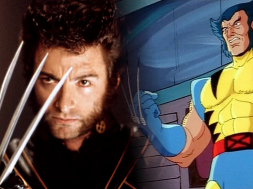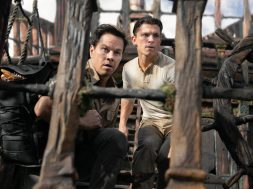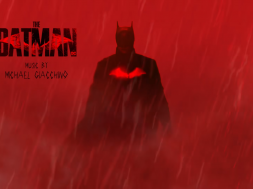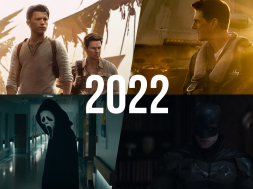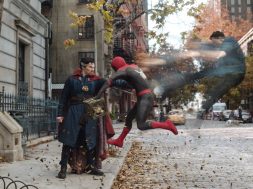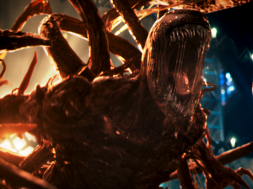
Richard Linklater is a director and screen-writer that is viable to court the title auteur, much in the same way as Tim Burton, Chris Nolan or Ken Loach. One could also add to that list John Michael McDonagh (Calvary) and Wes Anderson (The Grand Budapest Hotel). Like them all, Linklater’s films are recognizable for their thematic concerns and stylistic conceits. Also like many on the above, there are a small band of players that Linklater often calls upon from one project to the next. In this way it should not be surprising that Boyhood features Ethan Hawke, whose work with Linklater includes A Scanner Darkly, Waking Life and the Before Sunrise trilogy (a partnership of almost 20 years). It is in light of such sameness it is truly remarkable that Boyhood manages to be so very different, a 12 year collaboration featuring Patricia Arquette (of Stigmata fame), Ellar Coltrane and Linklater’s own daughter Lorelei alongside her father’s longstanding partner in crime.
 The film follows the childhood and adolescence of Mason (Mason Junior) a dreamer and introvert, referred to as a “stick in the mud” by his sister, played by Linklater the younger. We see him move, go to school, meet new family, fall in love, adopt an interest in photography and begin college. The film is notable in the way that it is a composite of the incidental moments, moments which at the time seem trivial in their importance. Cumulatively, however, these moments make for a touching portrayal of early life, school life, family life and teen angst. The same resonance can also be found in the score, which is taken from classic Rock ‘n’ Roll beloved of Mason’s father (Mason Senior) and releases from the last 12 years. In isolation they might not be much to marvel on; in the film they are apt for locating the film’s action chronologically and tonally.
The film follows the childhood and adolescence of Mason (Mason Junior) a dreamer and introvert, referred to as a “stick in the mud” by his sister, played by Linklater the younger. We see him move, go to school, meet new family, fall in love, adopt an interest in photography and begin college. The film is notable in the way that it is a composite of the incidental moments, moments which at the time seem trivial in their importance. Cumulatively, however, these moments make for a touching portrayal of early life, school life, family life and teen angst. The same resonance can also be found in the score, which is taken from classic Rock ‘n’ Roll beloved of Mason’s father (Mason Senior) and releases from the last 12 years. In isolation they might not be much to marvel on; in the film they are apt for locating the film’s action chronologically and tonally.
Before looking at the film in depth it is worth addressing a misnomer that has built up around it prior to release. As mentioned the film was made over 12 years. Conventional coming-of-age films feature multiple actors playing a character at different times of life, the adaptation of Angela’s Ashes being a notable example. Instead that adopt the same method, Boyhood features the same actors for throughout, Ellar Coltrane as Mason and Lorelei Linklater as his older sister Samantha. Footage would be filmed each over a period of 12 years showing the steady changes in the Coltrane’s character. Such an approach has lead many either to expect an episodic film treating each year in isolation or presume that the film is a documentary and not a drama. However, the film was entirely scripted (everything down to voice-filled we are led to believe). Simple in principle, complex in practice, the creative choice meant that cast and crew were in essence making a short film a year for 12 years. That said, a measure of the film and the filmmakers’ achievements is that the process and that process’ inherent technical complexities are rendered unremarkable for the films duration. It’s not until the film has unfolded, until light of the outside world greets dilated eyes, questions of feasibility occur, the preceding having dove-tailed seamlessly into a cohesive whole.
So far spoilers are excised. From here they abound. You have been warned! The treatment of family live lacks any schmaltz, and is often in fact airs the dirty laundry (so to speak). Nonetheless, the characters encountered do not fail to be enticing and empathetic, even in terms of their flaws. I should confess a certain prejudice that makes me sympathize with the films depiction of parents. The children of separated parents are often thought  to have some monopoly or family dysfunction. Family life is depicted as tumultuous but at not point does the story devolve into easy or tedious plot decisions that one might expect of a family drama. The sibling rivalry is well observed and delivered, as are the clique-ridden worlds Mason navigates in his his adolescent social-life, or lives. The change from story to stilted in the way Mason and Sam interact is as believable as it is endearing.
to have some monopoly or family dysfunction. Family life is depicted as tumultuous but at not point does the story devolve into easy or tedious plot decisions that one might expect of a family drama. The sibling rivalry is well observed and delivered, as are the clique-ridden worlds Mason navigates in his his adolescent social-life, or lives. The change from story to stilted in the way Mason and Sam interact is as believable as it is endearing.
Mason’s passion for photography is perhaps the key to seeing his character. Among the films central ironies, its central character is one whose life is spent on the periphery, a degree of removal that makes him observant. Understood in this way Mason’s camera is an extension of himself: as devices cameras capture images but as an image it captures his observant stick-in-the-mud quality. Consequently, through the course of the film the relationship between the viewer and the viewed subject. We, that is, the audience, begin the film in much the same as he, on the outside looking in. However, by the end we are fully integrated into his peripheral niche. Photography and its symbolism, however, is not limited to Mason’s vocation but extends the the way the film itself is shot. The anxiety and excitement of Mason’s time of life is manifest in the setting of the Texas wilderness; the vistas’ expanse embodies the limitless potential associated with that age. Place also punctuates the the the progression of Mason from start to end. The films features circumlocution to a camp-site of our hero’s early  life. In this way, the landscape underscores his character arc as a geographic movement.
life. In this way, the landscape underscores his character arc as a geographic movement.
One of the impressive features of the film is that so many of the teenage queries, musing and epiphanies mason has are never reduced to cliché. The fact that Mason gives voice to notions that have occurred to, occupied the minds of successive generations without seeming tedious or pretensions is an impressive feat from Ellar Coltrane. A good example is of Mason complaining about social media, specifically how technology we programmed is becoming technology we are increasingly programmed by, citing the release of serotonin when we receive Facebook updates. Mason wants experience that feels more real than the glib influx information that is so often superficial. His girlfriend Sheena, played by Zoe Graham, plays the foil. Indeed, she does with such authenticity that I expect most will find their conversation closely resembles one they had and had almost forgotten. The scene has a feel that also recalls On The Road (1957). Considering everything from the cosmos to contemporary issues from the seat of a pick-up truck is already very Kerouac as is the fallibility, the shortfall inherent to such intentions and desires that Mason voices. He wants something ‘authentic’ without really knowing what that means. However, owing to the fact that you can’t help seeing traces of your former self in Coltrane‘s performance, you can’t help shake the impression that he will come to regard many (though not all) of his questions as misplaced, much like us in the cinema. Moreover, as the film unfolds you are reminded of the time you felt with the same urgency as our young hero.
The film is triumph and I urge you to seek it out. 10/10

